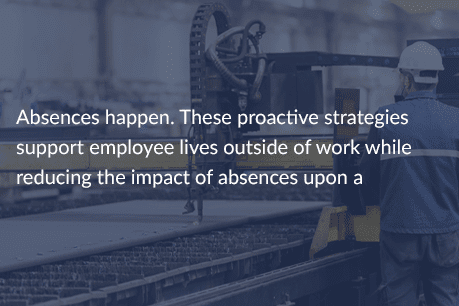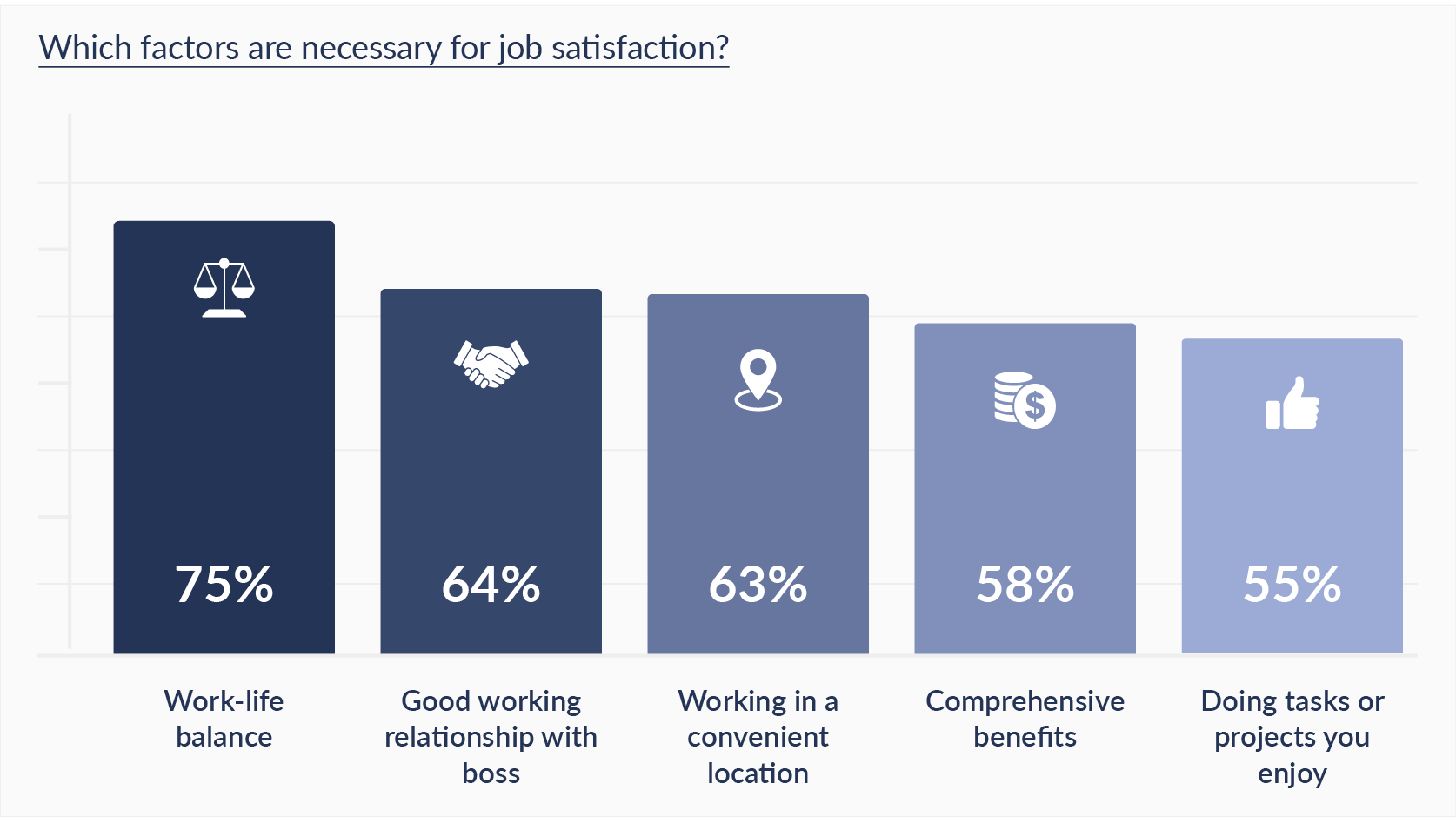4 Proactive Strategies to Manage Absenteeism: A Best Practices Guide

Absenteeism, which is generally defined as the repeated pattern of habitual absence from work, has been a decades-long challenge for many companies. However, the problems stemming from absenteeism continue to skyrocket, especially in industries with frontline workers, thanks to the global pandemic and an ongoing labor shortage.
According to estimates from the Brookings Institute (based on Census Bureau data), as many as 4 million people have missed work, are temporarily absent, or are working reduced hours due to long Covid. A recent CDC report notes that 11 percent of adults who previously had Covid-19 have long Covid symptoms, a statistic unchanged from January 2023. Among those, 53 percent reported “moderately severe” functional impairment, worse than that associated with stroke. In short, the research shows that Covid will continue to reduce labor pools.

But ongoing pandemic effects are only part of the problem. Employers, especially those in the manufacturing industry, continue to struggle significantly with unfilled jobs and employee absenteeism. According to a study by Deloitte and The Manufacturing Institute, as many as 2.1 million manufacturing jobs are projected to be unfilled through 2030. This shortage will negatively impact production and revenue — and could ultimately cost the U.S. economy up to $1 trillion. Another Deloitte study adds that workforce churn (including voluntary separations, layoffs, and terminations) is intensifying the already-tight labor market, resulting in near all-time high job openings.
All of this to say, it’s more important than ever to ensure shift coverage. By establishing and implementing an effective absence management strategy, managers won’t have to continually play defense the moment they walk in the door. There are tangible payoffs to addressing absenteeism, too, with employers seeing related benefits: lower OT costs, reduced turnover, improved employee morale, and optimized productivity.
In this guide, learn four ways employers can more effectively manage absenteeism in their workforce to avoid downtime, missed production targets and delayed shipments.
Best Practice 1: Provide Callout Mechanisms for Valid Absences
The reasons for absenteeism fall under two categories: those an employer has no control over (such as employees having to call out due to unforeseen life events) and those an employer can influence (such as schedule arrangements, workplace culture, and safety).
Life circumstances such as illness, emergencies, and other unexpected scenarios are valid reasons employees to repeatedly call out, come in late, leave early, or take extended or unscheduled breaks. For these types of events, employers should pivot away from punitive measures — and instead take a proactive approach to managing them.
One highly effective way to handle absences is by establishing callout mechanisms that enable employees to easily call out ahead of absences, both unforeseen and otherwise. Offering shift-trading capabilities allows employees some flexibility in their work schedules while also freeing up supervisors from having to fill unexpected open shifts at the last minute. Voluntary callout programs allow employees to put themselves on lists to be the first to be unscheduled if the company needs fewer people.
These kinds of worker-centric scheduling strategies don’t just help employers effectively manage valid absences and reduce their impact on the business, they also support employees’ lives outside of work. This benefit further reflects an employer’s commitment to healthy work-life balance — which is a non-negotiable for today’s workers.
Best Practice 2: Build a Culture Focused on Employee Well-Being and Safety
Simply put: a work environment that is less safe, fulfilling, or rewarding will exacerbate an employee’s temptation to stay away from it, sowing the seeds for a pattern of repeated absences.
For many 24/7 industries that rely heavily on shift employees — especially manufacturing, healthcare, energy, and the public sector — employee safety is understandably top of mind. However, many operations managers fail to recognize that a key cause of some critical safety issues, such as fatigue, is the employee schedule itself.
Supervisors must ensure enough workers are scheduled for each shift to meet demand while also ensuring that their employees are well-rested when they come to work. Scheduling is a key factor in employee fatigue; either from working too many shifts in a row or working without having a rest period for adequate sleep between shifts. A worn-out workforce is a consequence of poor schedule design and can be a key driver of absences in 24/7 industries.
While mitigating fatigue can be achieved with fatigue risk management policies, success largely depends on the accurate enforcement of those policies during schedule creation. Without management’s commitment to rethinking employee scheduling from the ground up, the decades-old “tough it out” mentality can lead to major problems.
“The science is clear,” says Mike Harnett, a human factors specialist and president of Solaris Fatigue Management. “Workplaces need to understand their role in the promotion and mitigation of fatigue. And the most important factor in their control comes down to the design of work schedules.”

While employee well-being may be grounded in good schedule design, programs should extend to support well-rested employees when they aren’t on the clock. Creative solutions include napping pods for employees who are making long commutes as well as workout trailers for workers pulling back-to-back shifts. Employee assistance programs are also expanding to cover the costs of sleep-aid solutions like blackout drapery, light therapy, and CPAP machines to help employees who struggle with the sleep conditions commonplace in 24/7 industries.
Employers can also take advantage of the powerful insights that technology-based scheduling solutions provide. Such workforce scheduling solutions allow employers to leverage insights such as employee absence patterns to design a schedule that reduces absences and callouts due to burnout.
Without programs in place to support employees’ well-being throughout their employment experience — both on and off the clock — employers will have to contend with higher rates of unplanned absenteeism and costly employee turnover.
Best Practice 3: Provide Employees with Influence Over Their Work Schedules
Workers today place much more value on work-life balance than their predecessors did. In addition, they have more diverse lifestyle needs than past generations of workers — and they require vastly different schedule arrangements. For example, some employees want overtime; some don’t. Some want consistent hours; some prefer more flexible shift patterns.
Research emphasizes the prevalence of this new labor landscape. Indeed, in Shiftboard’s 2023 State of the Hourly Worker survey, 75 percent of hourly workers stated that work-life balance was necessary to feel very satisfied with their job. Achieving work-life balance was identified as the number one driver of job satisfaction — ranking even higher than comprehensive benefits.
In effect, when employers address workers’ ever-increasing demand for more control over their schedules, they can reduce absenteeism and optimize attendance. Scheduling technology holds the key by allowing organizations to track and accommodate worker availability and shift preferences and create schedules that are both worker-centric and drive operational goals.
A direct and compelling correlation also exists between the level of control employees feel over their job and the level of job satisfaction they experience. Today’s shift workers want more control and influence over their work schedules — 82% say it’s extremely important to them. It’s so important that 40 percent said they would even take a pay cut in exchange for more control over their schedules. Organizations that score high among employees for job satisfaction understand and internalize the concept that employees who feel healthy, safe, and satisfied with their job also feel empowered at work.

Source: Shiftboard’s 2023 State of the Hourly Worker Report
Likewise, having some control over overtime (OT) also plays an important role in employee satisfaction. Some employees welcome overtime, while others see it as a burden. Managers must distinguish the difference and set clear policies around scheduling mandatory overtime (sometimes referred to as forced overtime) and offering volunteer overtime (which is roughly defined by an employee deciding if, or how much, overtime they will work).
Self-serve scheduling is a powerful tool in managing certain aspects of overtime, helping to reduce absenteeism. By utilizing strategies that enable employees to exert control over OT scheduling, both the employees and the organization see tremendous gains. Consider Shiftboard’s customer, a multinational manufacturer and distributor of medical supplies, that was struggling to fill mandatory overtime shifts. They decided to change their overtime policy to a completely voluntary basis, where employees signed up if they wanted to work overtime shifts. The results were highly positive: the facility increased the fill rate of overtime shifts to almost 100 percent every week. This is an excellent example of a win-win strategy — the company filled their overtime, and the employees who wanted extra work got overtime hours.
Voluntary overtime and self-serve scheduling can vastly improve shift coverage. At the same time it not only allows employees to have a say in when they’re working, but also in what they’re doing on the job, too. Employees experience higher job satisfaction when performing tasks in their areas of skill or interest. These benefits can be amplified when employees have a visible choice in the matter, an option further facilitated by self-scheduling capabilities. It’s a win for productivity, too – performing tasks employees enjoy keeps them engaged and motivated.
The takeaway is clear: Putting employees in the driver’s seat concerning workplace issues like scheduling is instrumental in keeping them happy in their jobs — and returning to work every day.
Best Practice 4: Establish Clear Communication and Nurture Transparency
One essential strategy for combating absenteeism is establishing clear communication and nurturing transparency around the scheduling process. Every organization — especially those who rely on frontline and shift-based employees — should have definitive scheduling and leave policies that establish clear, easy-to-understand guidelines about schedule creation and how planned and unplanned leaves are managed. Such transparent policies serve as valuable resources for your organization by establishing well-defined rules and expectations related to employee schedules.

In addition to clarifying policies and governances around scheduling, offering employees convenient access to updates regarding changes and new shift opportunities are great ways to keep the lines of communication open. In this way, employers can directly enable the critical work-life balance that today’s generation of workers is looking for.
How Technology Can Help
How we work has changed dramatically in many ways over the last few years, and how we schedule work must change, too. Indeed, an organization depending on workers showing up when they’re supposed to — and vice versa, that employees can rely on their employers to provide a safe workplace and satisfying employment — is a basic tenet of any effective corporation. But more than ever, technology can simplify and streamline that objective in a way that other outdated processes and methodologies simply can’t.
Powered by robust technology, today’s most effective workforce scheduling solutions help employers reduce, prevent, and address absenteeism in many ways:
- Employers are notified about absences sooner, providing ample time to provide backup coverage more quickly and effectively
- By optimizing shifts and schedules according to operational goals and employee shift preferences, workforce managers can reduce callouts due to fatigue/burnout
- With schedules that support work-life balance, your business will be able to curb absenteeism proactively
- Boost attendance and reduce accidental no-shows and tardiness with effective communication
Intelligent scheduling technology is your next line of defense against worker absenteeism and many other scheduling pitfalls related to labor shortages. Finding coverage today in response to absenteeism requires being able to respond quickly and strategically by exploring all possibilities to fill an open shift. Shiftboard’s employee scheduling software offers an always-on optimization engine to do just that — and then suggests your best course of action, enabling a rapid response and removing a huge administrative burden from schedulers.
Shiftboard’s win-win philosophy combines optimization with data-driven employee preferences to help create the perfect schedule. The software offers functionality to communicate and store shift preferences to engage employees in the schedule creation process and reduce absenteeism and turnover in the workplace. In short, it solves any level of complexity, creates a work environment that employees want to be a part of, and helps your business create operational efficiency.
Recommended Additional Resources



